Islamic Motifs and the 4th Dimension: An Artistic Experiment
allahallah
The following drawings give an example of how Islamic motifs can be used to begin to visualize 4th dimensional objects. These drawings are based on the Khatem Sulemani, the basic 8-point star motif found throughout Islamic mosaics. This motif, which is traditionally elaborated upon with concentric circles, added star points, and many colors, is here superimposed around a common point, creating a single geometric object made up of eight overlapping 8-point stars. The shifting and superimposing of a single object suggests a higher dimensional reality. For example, the hypercube (a cube in the 4th dimension) is a 3-D cube which has been shifted in a 4th direction, a direction which does not exist in 3-D space. Drawings of a hypercube are portrayed as 2 cubes, one shifted but superimposed over the other, with their vertices connected. Thus, this drawing can be used to think about higher dimensional space.

allahallah
This complex, symmetric drawing seems to contain multiple cubes within it which shift and interact with one another. The longer one stares, the more these cubes seem to connect with each other, forming hypercubes. The drawings of colored cubes which follow highlight each of the cubes present; there seem to be 16 facing outward, and 16 facing backward (only 2 of the backward-facing cubes are drawn).
 allahallah
allahallah
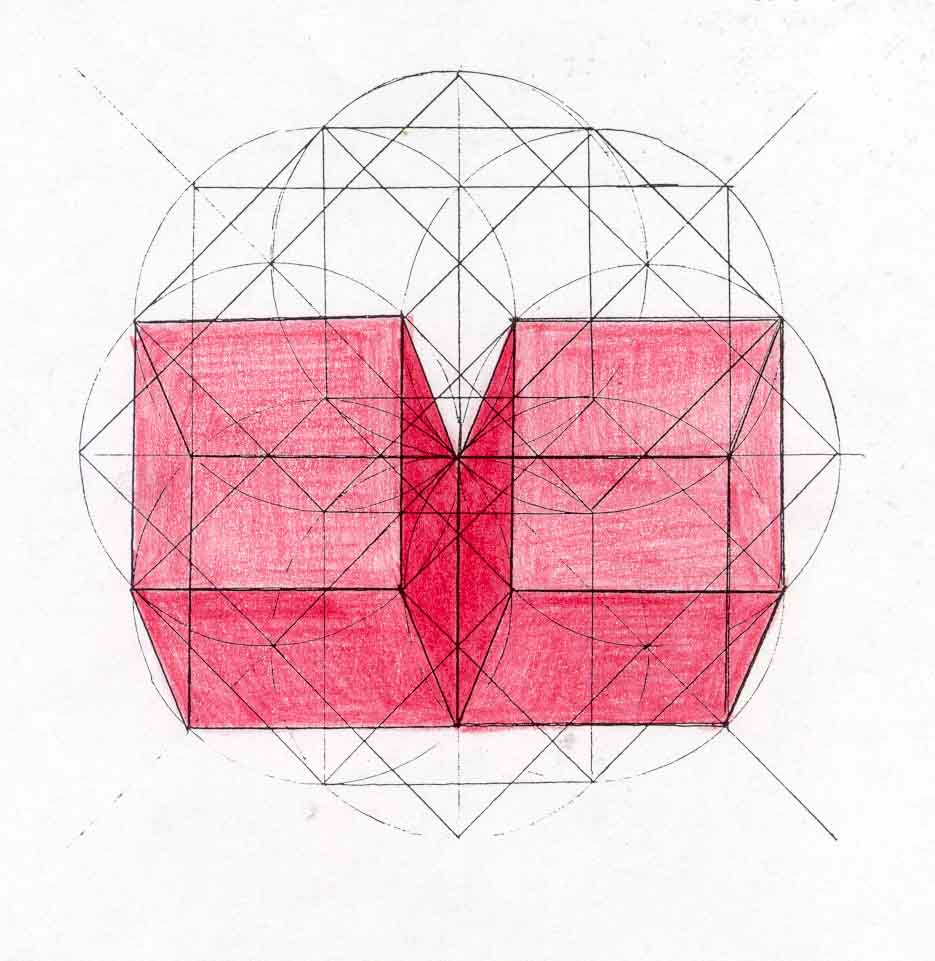 allahallah
allahallah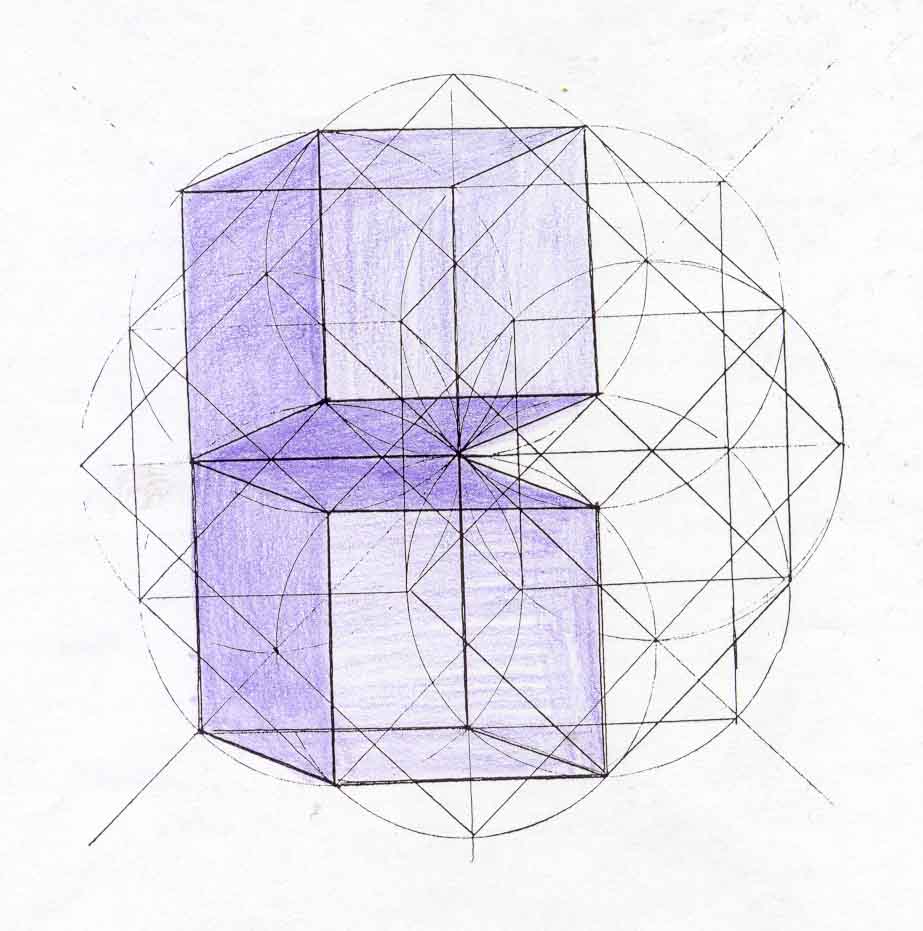
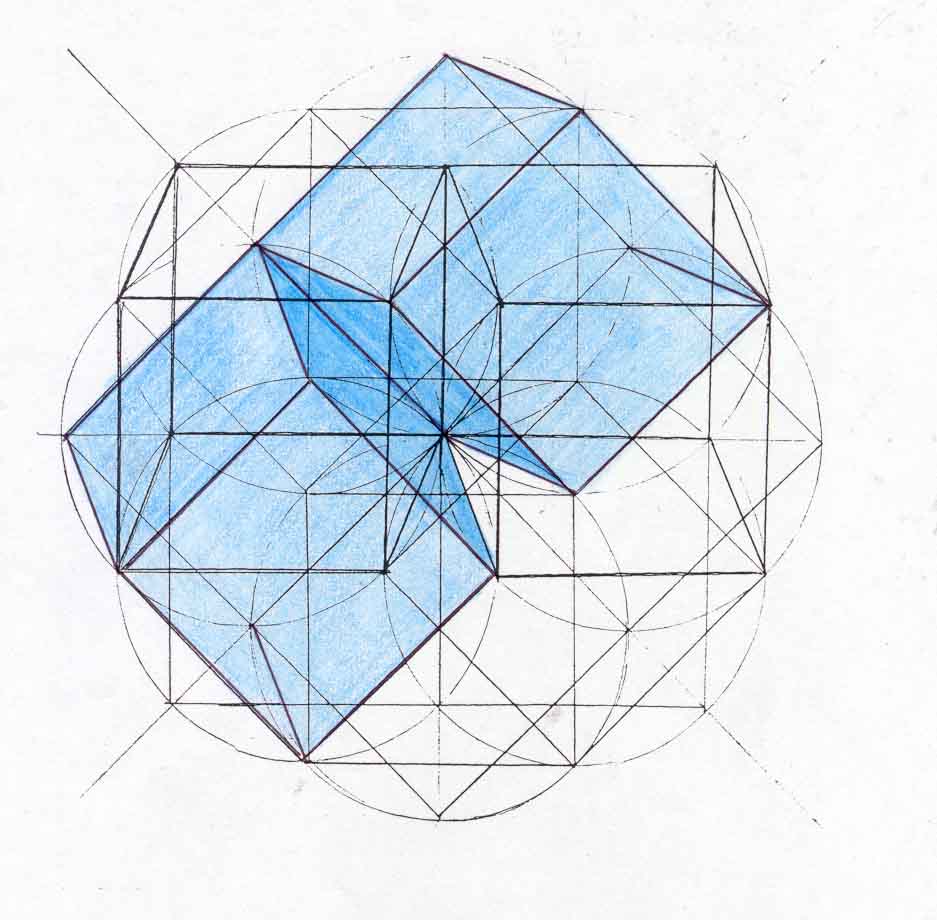 allahallah
allahallah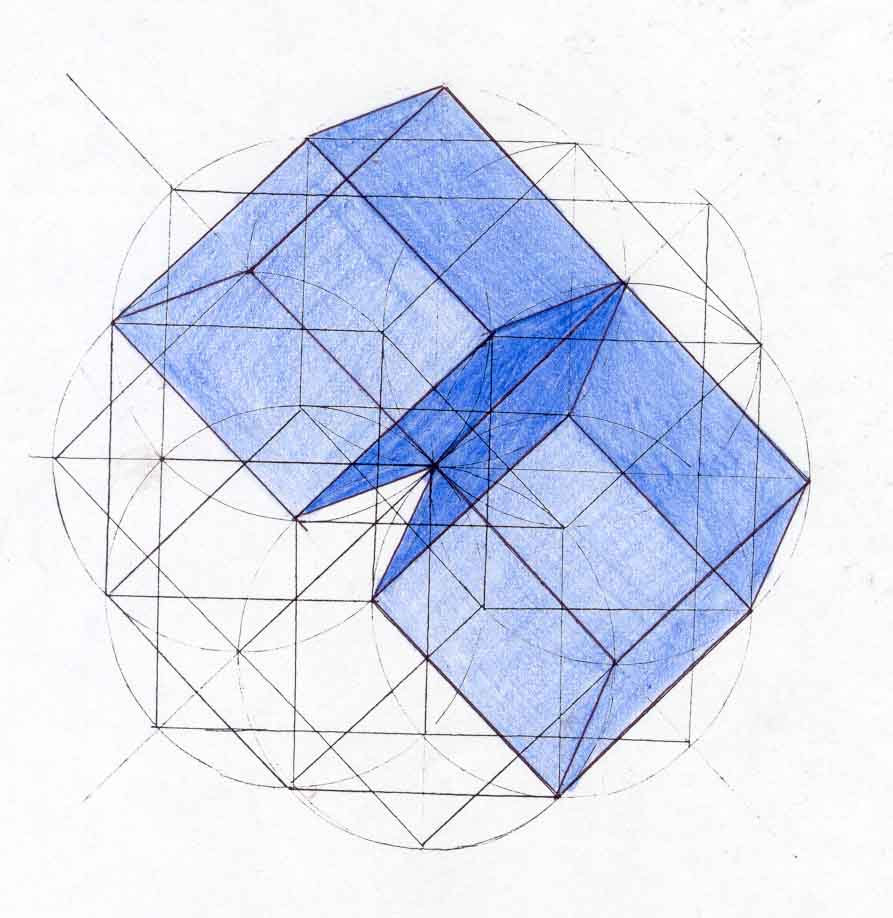
 allahallah
allahallah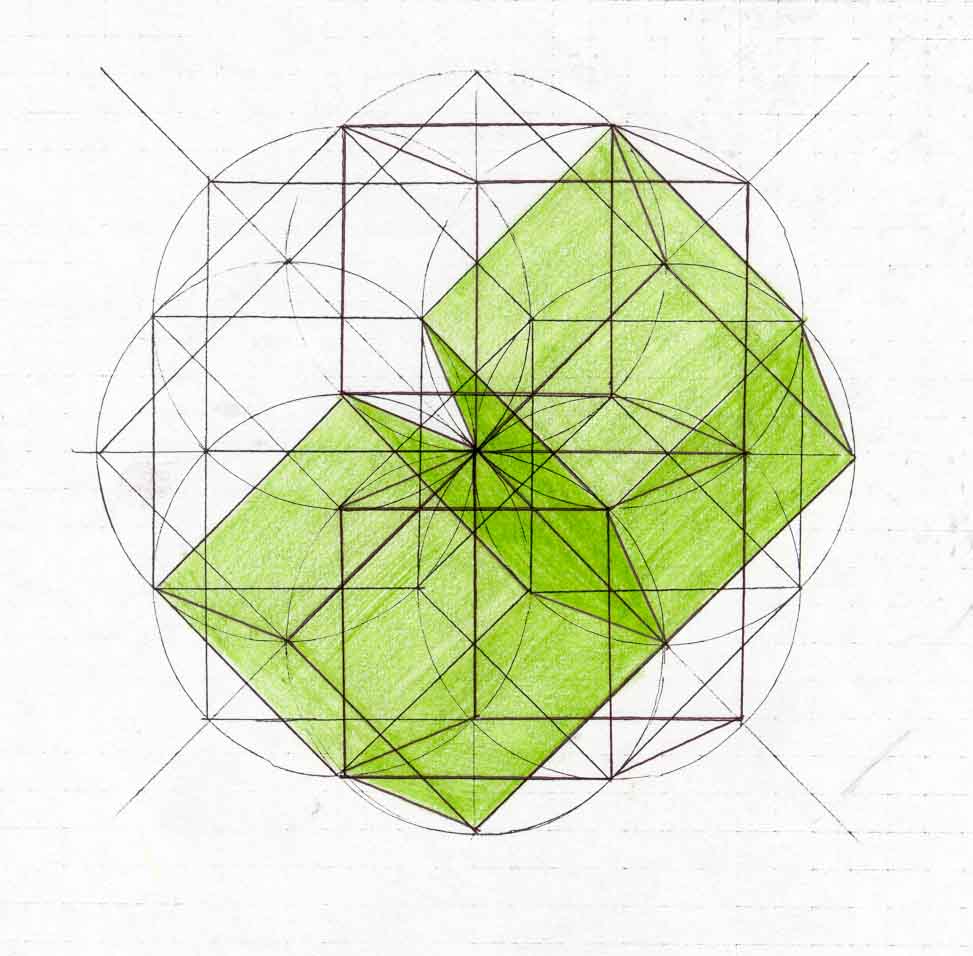
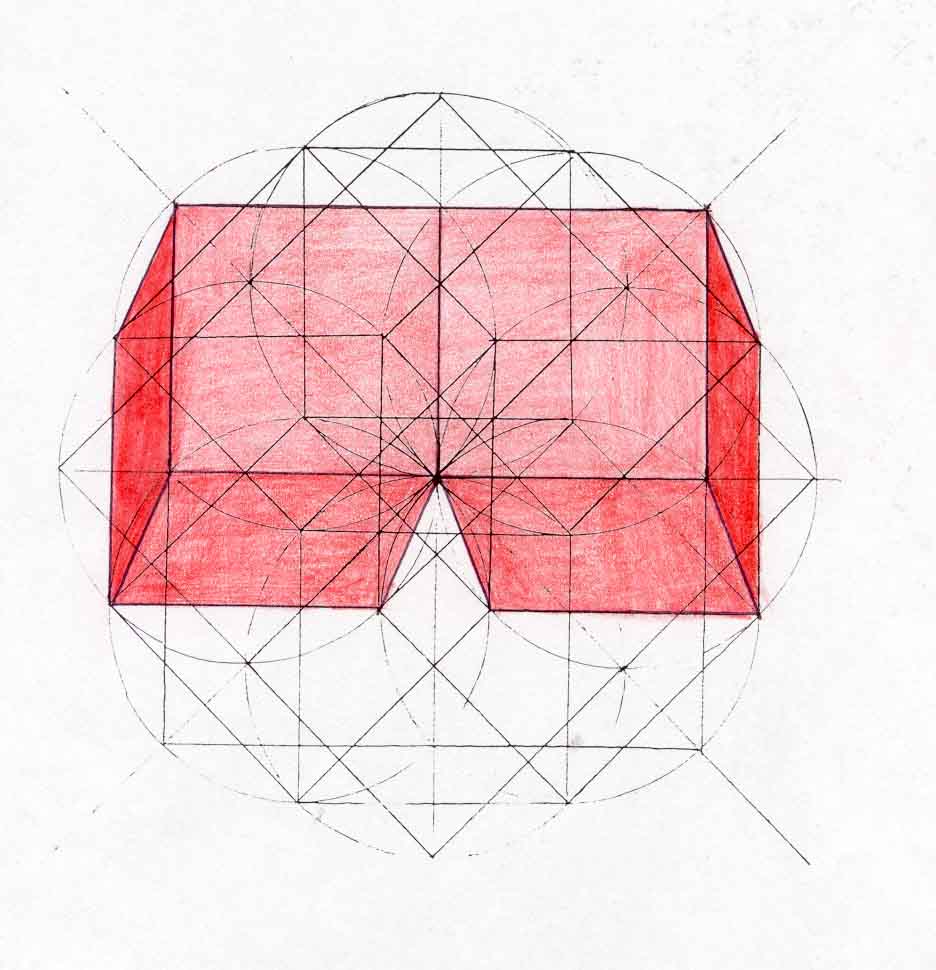
allahallah
Contemplating an object which contains all of these cubes at once leads us to a visualization of higher dimensional space; the cubes face the viewer from different perspectives, and thus could not all exist simultaneously in 3-D space. Does this drawing suggest a 4th dimensional reality, where all these cubes, and perhaps others, exist simultaneously? What would think object look like if we rotated it? Is there a series of cubes that exist within the center "wedge" of the drawing? These as well as other questions are raised by these experimental drawings. These rough sketches simply suggest the ways that Islamic motifs and Islamic art may be able to help artists and mathematicians visualize dimensions higher than our own.
allahallah
The same sketch of eight Khatem Sulemani can be used to visually represent the cosmology of Ibn Sina, which is discussed above. This colorful circle represents the cosmos and all that is in it. The circle is defined by a center point which, in Ibn Sina's language, is the source from which all life and movement emanate. This point is also the source of divinity in the cosmos. According to Ibn Sina, objects close to the center point are hot and moist, full of movement, and are represented here by brighter, warmer colors. As we move farther from the center point, the colors become darker and duller, suggesting the coldness and dryness of objects far from the source. The entire drawing is enclosed in a circle, representing the wholeness and completeness of the system.
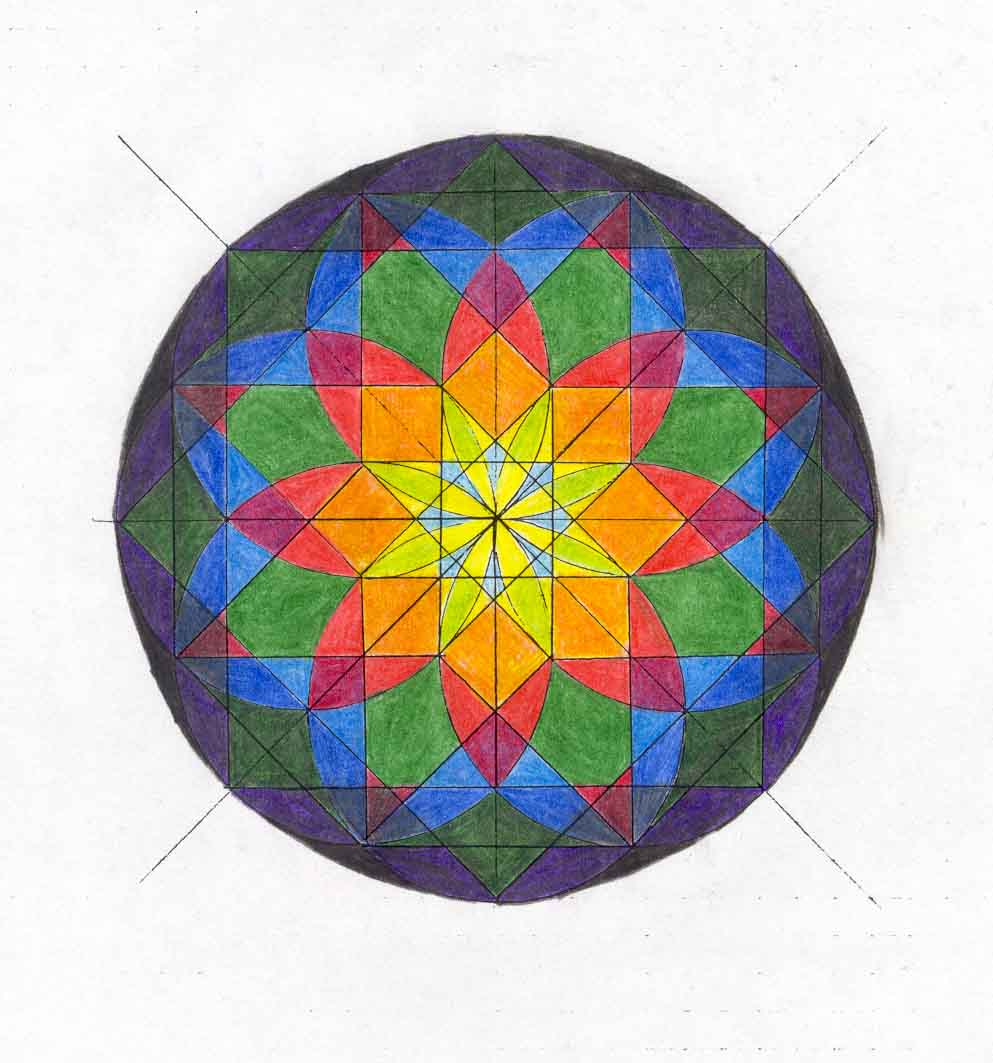
allahallah
The entire drawing is also a representation of Islamic idea that we start as a point (0-D), move to a line (1-D), move to a square (2-D), move to a cube (3-D), then move as a moving cube, full of life, close to the divinity of the source (4-D) and then collapse back into a point again. This progression is represented in the drawing as we move from a circumference point to the center of the circle. We begin in 0-D at a circumference point; as we move closer in, the number of dimensions increase, as the number of Khatem Sulemani which overlap increase. Closest to the center point, there are 3 overlapping Khatem Sulemani, as well as the added dimension of heat and movement (the bright color). From this point the many dimensions collapse back into 0-D again when the center point is reached. Combined with the awareness of the cubes and hypercubes existing within this drawing as well, such a blend of cosmology and color can create a truly beautiful and meaningful work of art.
Dimensions in Islamic Pattern A Fourth Dimension
New Directions
Islamic Motifs and 4-Space
Home


 allahallah
allahallah
 allahallah
allahallah
 allahallah
allahallah
 allahallah
allahallah

